While “SEO is dead” chatter is at record levels, many sites are still getting lots of valuable traffic from SEO.
But SEO is obviously evolving. Search results are transforming from quarter to quarter, and many of the things that are core areas of focus now won’t be even by the end of 2025.
In this article, I’ll walk through some trends and predictions for SEO in the remainder of 2025 (along with advice on how businesses can leverage and respond to the trends and changes).
Contents
- SEO now means SEO + GEO
- Schema will be a focal point
- Many businesses will be clamoring for brand mentions on listicles
- AI Overview optimization will increase
- We’ll see a shift toward mid-to-lower funnel content
- More businesses will release AI tools
- Link building will become even more valuable
Top SEO trends and predictions for the rest of 2025
Let’s break down what each of these trends and predictions is and what they mean for you and your strategy.
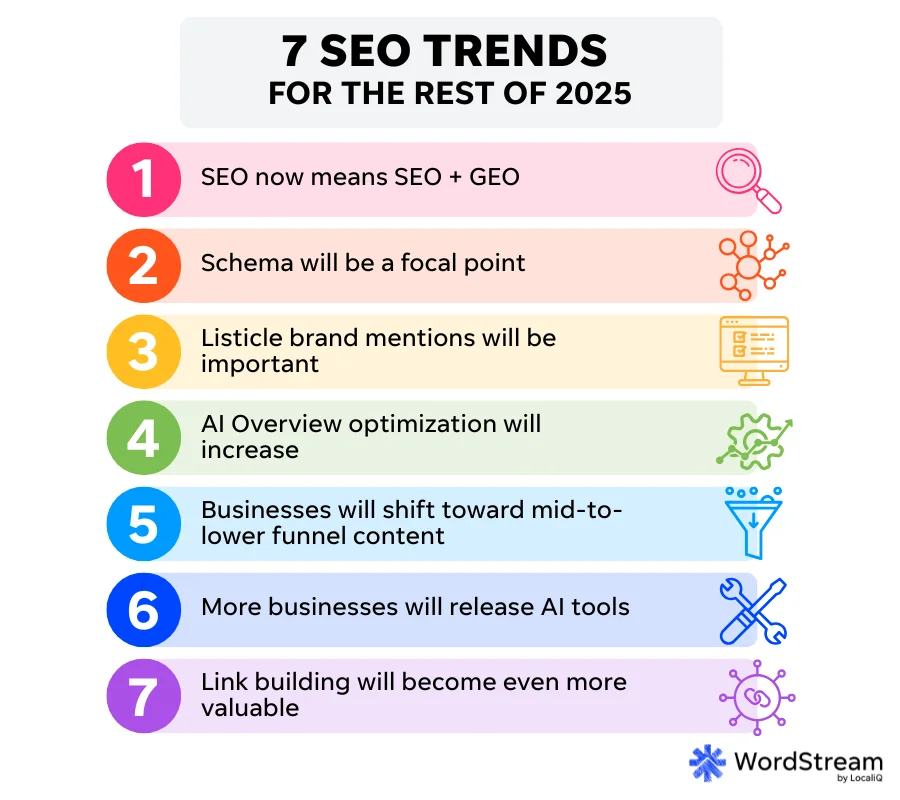
1. SEO now means “SEO” and “GEO”
Whatever you want to call it, there’s been a lot of talk about SEO versus what I’ll call “GEO” (Generative Engine Optimization)—the optimization of a site or business for visibility and placement within AI tools like ChatGPT, Claude, Perplexity, etc.

There are several challenges in thinking about SEO and GEO right now:
- For most sites, SEO (or search traffic that comes primarily from Google or Bing) drives much more traffic than referrals from sites like ChatGPT, Claude, etc. Even for sites that have lost traffic from Google.
- It seems likely that that gap will close quickly in the coming months, but it’s difficult to tell how quickly and how much share will be directly “stolen” by AI tools or LLMs.
- Many tactics that are SEO best practices are also best practices for gaining visibility in LLMs.
- Some tactics will be much more valuable for placement in LLMs or won’t matter at all in SEO results, and some more aggressive GEO tactics could even get sites penalized in traditional search rankings.
- SEO results are increasingly becoming a hybrid of traditional search results and AI-generated search results, with the increasing presence of AI Overviews in Google search results.
- Agentic search, or users using specific AI agents to perform specific tasks or answer specific questions, is in its infancy, and optimizing for placement in AI agents will likely require different tactics than either SEO or GEO.
My prediction for the rest of 2025 is that for most businesses, the responsibility of “SEO” will encapsulate both optimizing for search placement on Google and placement in LLMs. Marketing teams or agencies will be expected to work on tasks that aid with both of these things. And, as the numbers for referrals from LLMs get more and more interesting, businesses will want to understand the optimization process and be willing to focus more resources on getting placement and visibility there. I also believe that in many cases, where SEO traffic is less accessible for some sites, they’ll look to shift focus and investment from traditional SEO to GEO.
🔎 Need help understanding the modern rules for SEO? Download our free guide >> How to Do SEO Right—Right Now!
2. Schema will be a focal point
As Martha van Berkel recently pointed out:
“In March 2025, Fabrice Canel, principal program manager at Bing, confirmed that Microsoft uses structured data to support how its large language models (LLMs) interpret web content.
Just a day later, at Google’s Search Central Live event in New York, Google structured data engineer Ryan Levering shared that schema markup plays a critical role in grounding and scaling Google’s own generative AI systems. ‘A lot of our systems run much better with structured data,’ he noted, adding that ‘it’s computationally cheaper than extracting it.’”
As businesses become more interested in GEO in the remainder of 2025, the use of schema will become more of a focus.
The specific form of schema you’d use will vary from niche to niche, but a few that I predict will be more commonly used:
- FAQ
- Carousel
- Data Set
- Q&A and Forums
- How-To
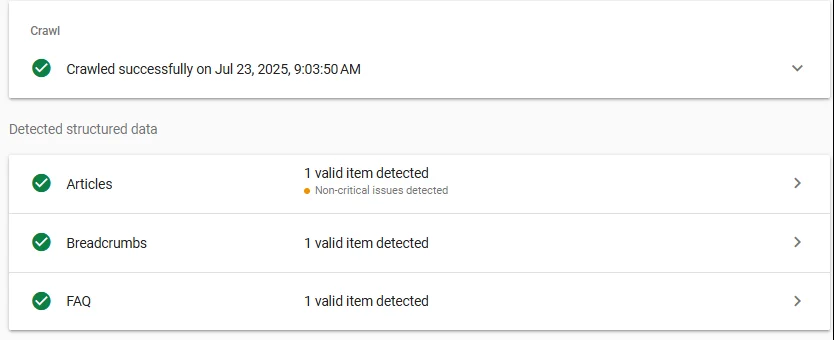
And sites will continue to use schema like organization, product or software, recipe, etc. (but may be even more diligent in implementing these kinds of schema).
3. Brand mentions on listicles will be a big goal for many businesses
As LLMs gain more and more traction through the rest of 2025, businesses will be looking for tactics that have characteristics like:
- Improving SEO traffic, particularly with mid to lower funnel terms.
- Improving GEO visibility and rankings/traffic.
- Helping with general marketing.
Data suggests that listicles get cited more than any other content type by LLMs currently. Additionally, GEOs are looking at how frequently your brand is mentioned in conjunction with specific terms.
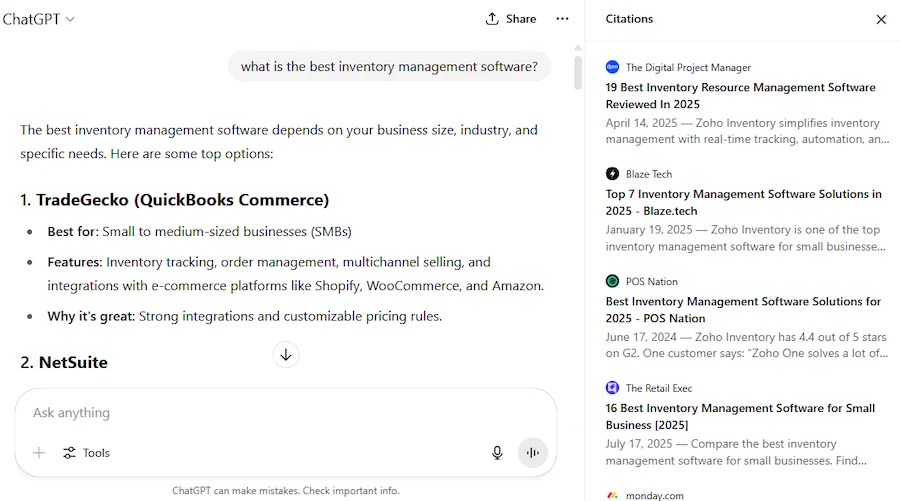
Here’s an example of the power of listicles—a search for “email outreach software:”
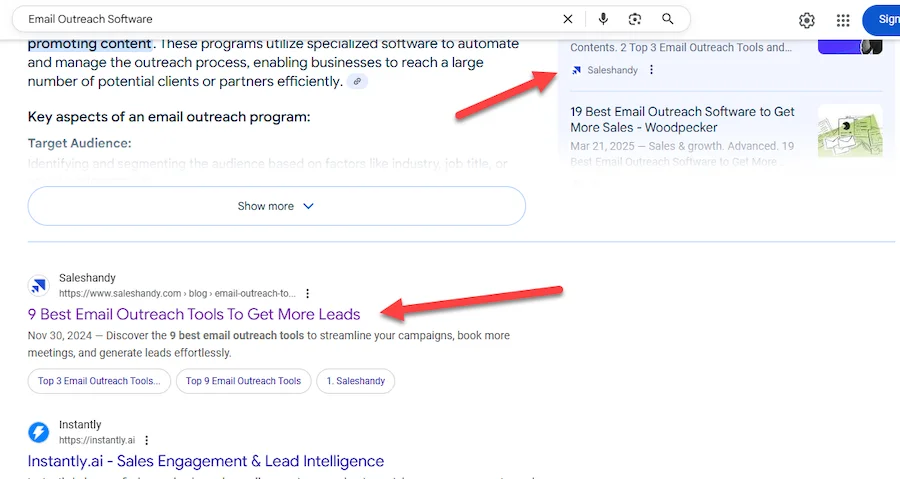
The results show a best of list from Saleshady. On the list itself, they rank themselves first, and list competitors:
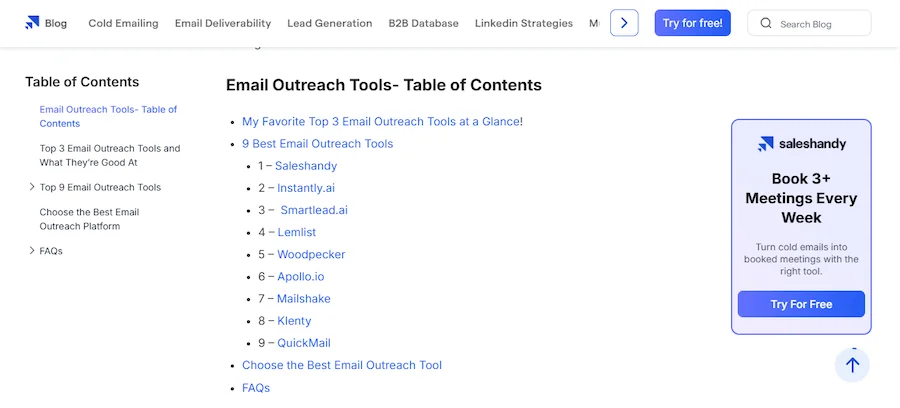
Focusing on creating and getting listed on listicles and having your brand mentioned alongside the categories you want to show up for will be an increasingly emphasized and executed tactic as 2025 wears on.
👀 Looking for more ways to drive people to your site? Free guide >> 25 Ways to Increase Traffic to Your Website
4. We’ll see more emphasis on AI Overview optimization
The image below is an example of “The Great Decoupling” in SEO, where many sites with AI Overviews in their highest traffic search results are seeing an increase in impressions from search but a drop in actual clicks or visits.
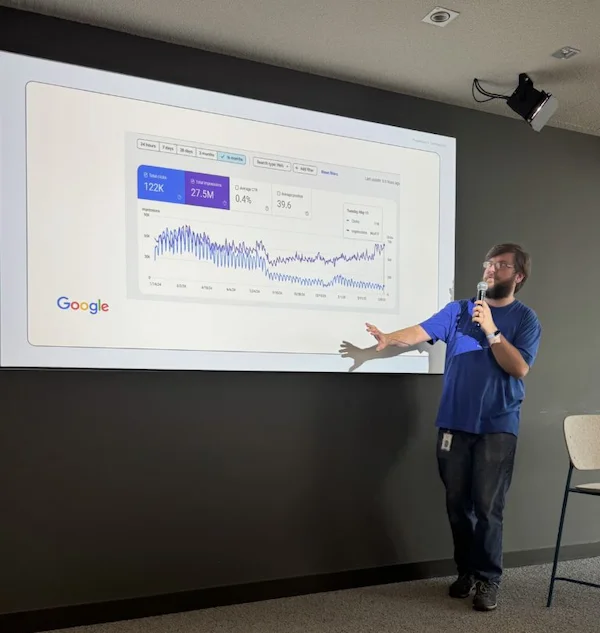
This is because their site is getting featured in AI Overviews, but their listing in traditional search results is getting pushed down, resulting in less traffic.
As AI Overviews show up in an increasing number of search results in 2025, I predict there will be an increase in advice and emphasis on AI Overview optimization.
Even though the click-through rate on those placements is much lower than traditional search, finding ways to get featured in and extract clicks from those listings will be the only available traffic in many SERPs, so businesses will turn to optimizing for that real estate (even if the traffic feels like crumbs compared to top rankings previously).
5. We’ll see a shift toward mid-to-lower funnel content
Along those same lines, as it becomes obvious that traffic from some top funnel, informational search queries “isn’t coming back,” sites will shift focus within their keyword targeting.
While many search results may not be safe from AI Overviews, certain content types will perform better in a “post AI world,” and those will be more of a focus for websites and publishers looking to get traffic from SEO and GEO.
Let’s say you had an inventory management software company that had been generating a lot of top-funnel traffic from “what is X” types of queries, and traffic to glossary-style pages has dropped due to AI Overviews:
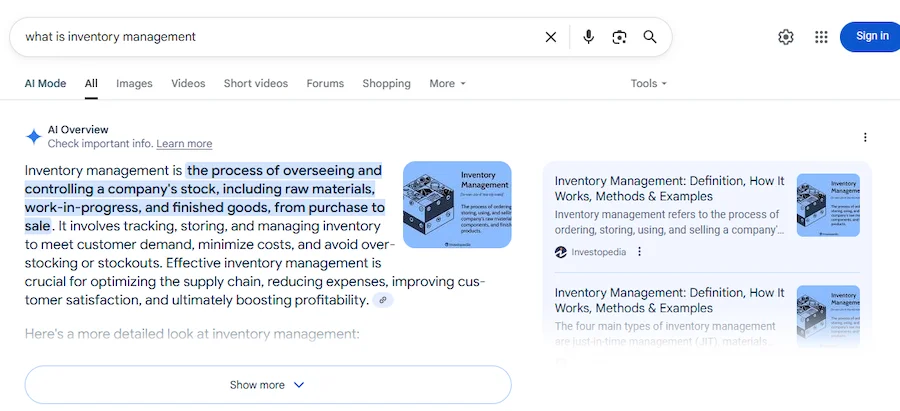
The software category itself—while a competitive query—does allow for real estate for a software company:
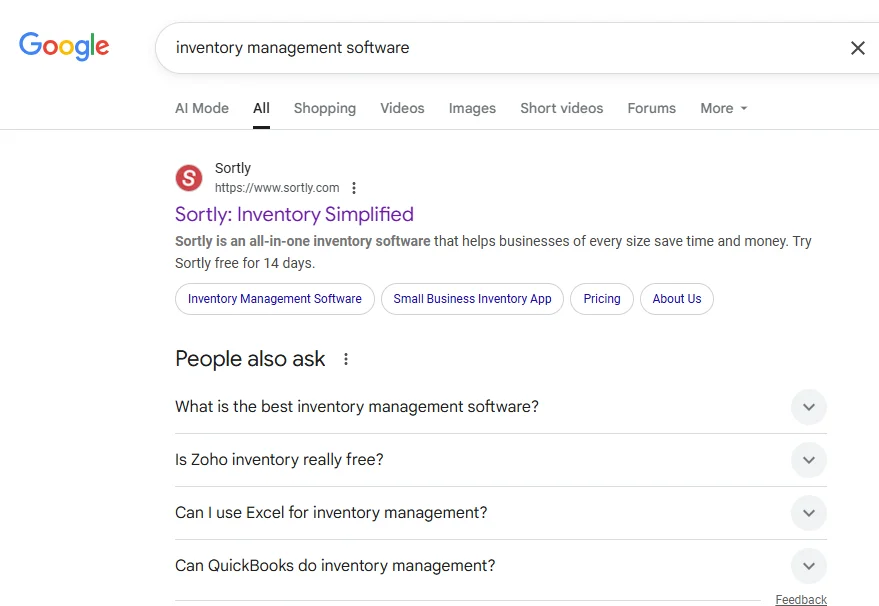
Similarly, the software category + the industries you serve, while not driving as much top-line traffic as what is X queries, could offer traffic and much stronger conversion rates:
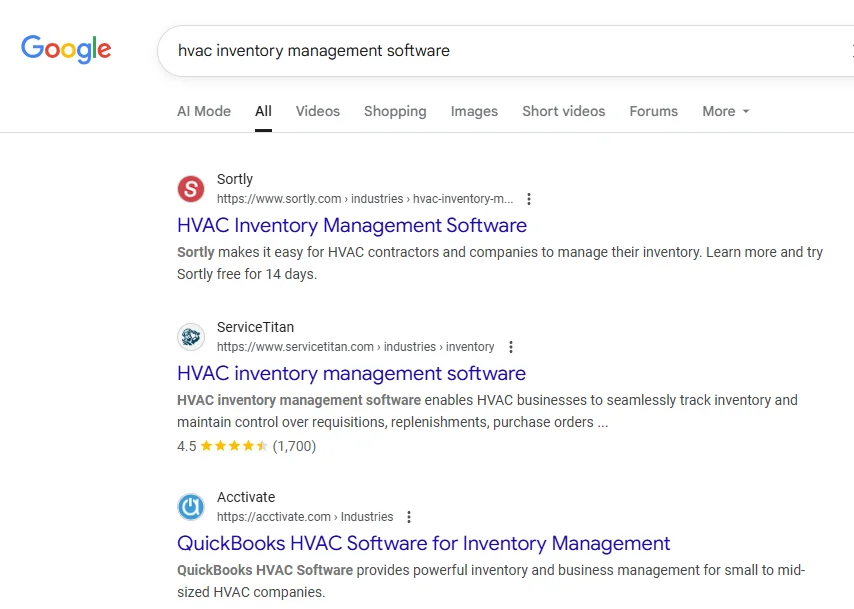
And you see here, by building comparison pages, this company is jumping ahead of the AIO (on desktop at the time of searching, anyway):
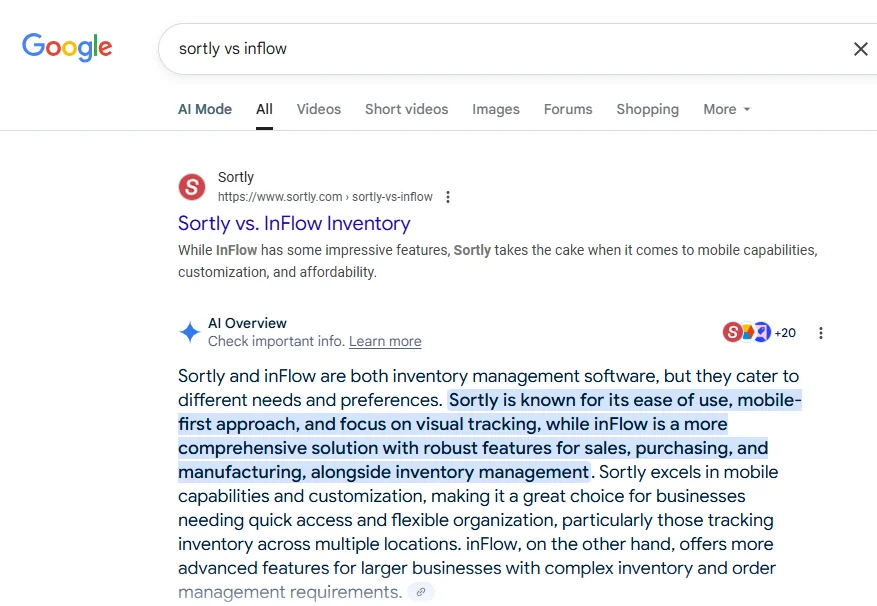
As the traffic opportunity for top-funnel, informational pages dries up, emphasis on these types of lower to mid-funnel content types will be even greater for the rest of 2025.
🚀 Free guide >> 10 Tangible & Free Ways to Get on the First Page of Google
6. More businesses will release AI tools
With the rapid improvement of AI coding tools (and the introduction of AI into various types of tools), creating simple, useful, free tools is easier than ever, but most sites and companies still aren’t taking advantage of it.
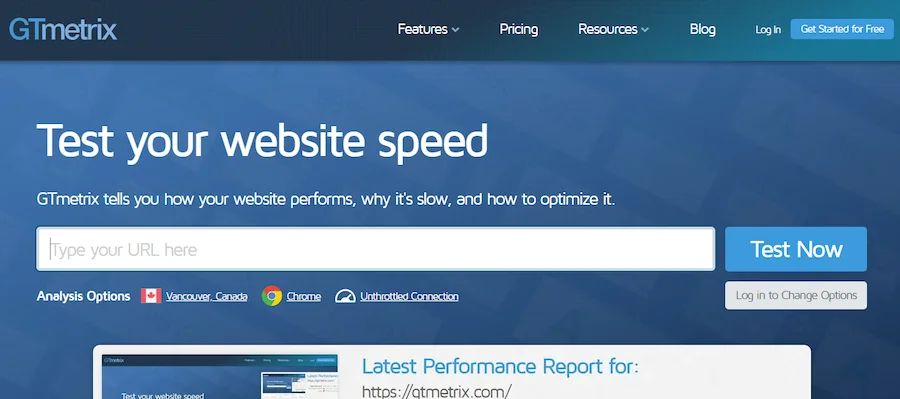
Additionally, while many affiliate sites have been wiped from search results after the Helpful Content Update, many sites built around a core tool or set of tools are still thriving.
I predict the second half of 2025 will see more sites recognize this opportunity, and tools like:
- Calculators
- Interactive checklists or planners
- Document generators (templates)
- Niche-specific tools like The Free Keyword Tool
And other tool types will be introduced to both answer search queries as a page and even serve as more and more businesses’ homepage or above-the-fold experience.
Think about the types of problems your prospects have that can be solved with things like templates:
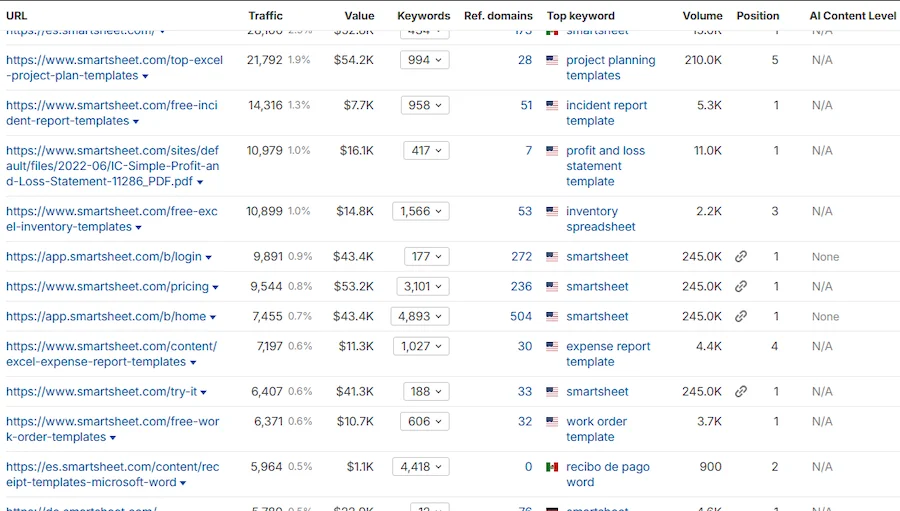
And whether those templates can be turned into tools and calculators. A template could be transformed into empty fields for a visitor to input a project plan, or questions that imply a calculation. “How big should my dog crate be?” could be a dog crate chart and/or calculator. “What size TV should I get?” could be a TV size calculator.
These assets can help your SEO focused page rank, can generate links from other sites, and can be referenced in LLM results.
7. Link building will become even more valuable
If the above predictions are correct and more sites are attempting to:
- Optimize for both SEO and GEO
- Focus more on mid to lower funnel topics for SEO
- Increase brand mentions and placement on listicles
Then “link building” as a tactic will become even more valuable and get more investment as the year goes on.
Specifically, the link-building tactics that best fit these three priorities include:
- Digital PR: High-quality links from major publications where thought leaders within a company and the industry itself is mentioned in conjunction with category terms help both SEO and GEO. Things like quotes in relevant articles, data-rich articles with specific insights for journalists, etc.
- Deep links: Deep links from tactics like guest posting into specific pages that are mid to lower funnel help support that strategy.
- Listicle placements: Again, with listicle placements, the links from these types of posts help SEO, and placement on these types of assets seems to disproportionately help with GEO placement and referral traffic. As a tactic, this can be either reaching out to existing assets for placement or creating an asset to be placed on a third-party site.
Stay ahead of the changing SEO landscape throughout 2025
For the remainder of 2025 (and into 2026), the overarching theme for businesses and websites looking to drive traffic from SEO will be to identify and exploit the opportunities that help drive both SEO and GEO traffic and leads.
Which specific tactics you focus on will vary depending on your site and your niche and will include a mix of:
- Link building
- Brand mentions
- Mid to lower funnel content
- Tools
- Schema
Identifying the right mix of tactics for your business will help with both SEO and GEO growth for most sites.
Need help with your SEO strategy right now? Reach out for a demo to see how we can help.







